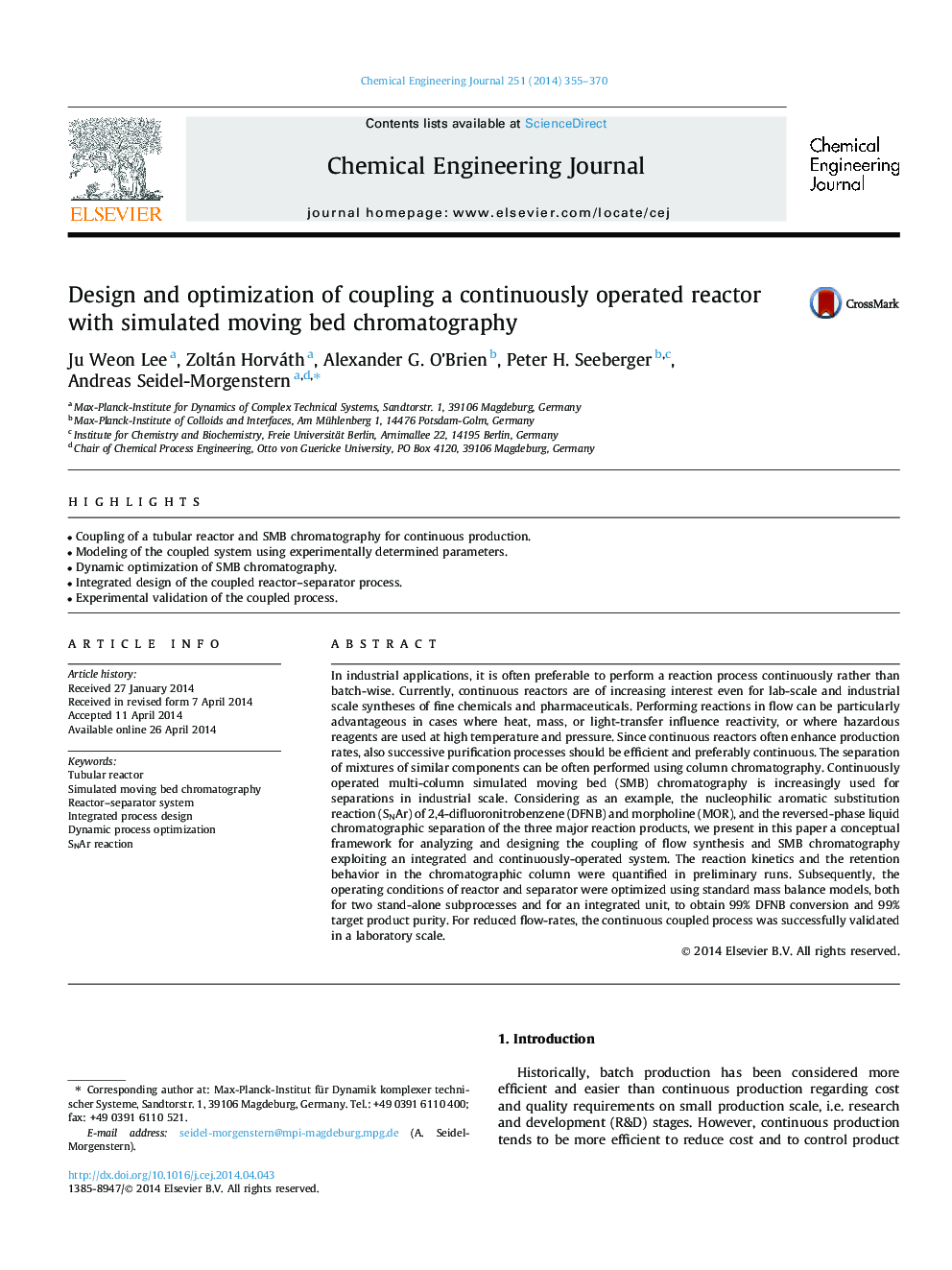| Article ID | Journal | Published Year | Pages | File Type |
|---|---|---|---|---|
| 6586577 | Chemical Engineering Journal | 2014 | 16 Pages |
Abstract
In industrial applications, it is often preferable to perform a reaction process continuously rather than batch-wise. Currently, continuous reactors are of increasing interest even for lab-scale and industrial scale syntheses of fine chemicals and pharmaceuticals. Performing reactions in flow can be particularly advantageous in cases where heat, mass, or light-transfer influence reactivity, or where hazardous reagents are used at high temperature and pressure. Since continuous reactors often enhance production rates, also successive purification processes should be efficient and preferably continuous. The separation of mixtures of similar components can be often performed using column chromatography. Continuously operated multi-column simulated moving bed (SMB) chromatography is increasingly used for separations in industrial scale. Considering as an example, the nucleophilic aromatic substitution reaction (SNAr) of 2,4-difluoronitrobenzene (DFNB) and morpholine (MOR), and the reversed-phase liquid chromatographic separation of the three major reaction products, we present in this paper a conceptual framework for analyzing and designing the coupling of flow synthesis and SMB chromatography exploiting an integrated and continuously-operated system. The reaction kinetics and the retention behavior in the chromatographic column were quantified in preliminary runs. Subsequently, the operating conditions of reactor and separator were optimized using standard mass balance models, both for two stand-alone subprocesses and for an integrated unit, to obtain 99% DFNB conversion and 99% target product purity. For reduced flow-rates, the continuous coupled process was successfully validated in a laboratory scale.
Related Topics
Physical Sciences and Engineering
Chemical Engineering
Chemical Engineering (General)
Authors
Ju Weon Lee, Zoltán Horváth, Alexander G. O'Brien, Peter H. Seeberger, Andreas Seidel-Morgenstern,
